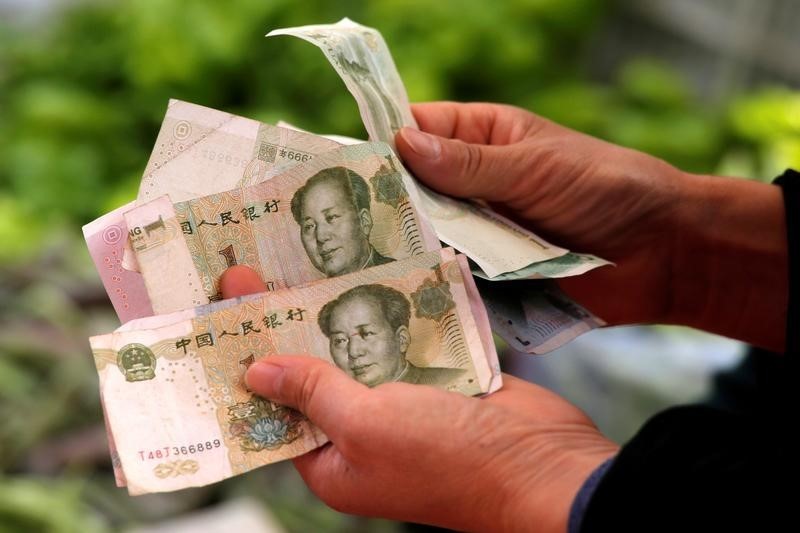Gold bars to be exempt from tariffs, White House clarifies
Investing.com-- Most Asian currencies extended gains against a weak dollar on Wednesday although caution persisted on uncertainty around U.S. tariff policies, while the Chinese yuan edged lower despite a robust economic data barrage.
The US Dollar Index, which measures the greenback against a basket of major currencies, fell 0.4% in Asian trade on Wednesday, remaining near its three-year low reached last week.
Yen, rupee advance; Trump tariff uncertainty looms large
While the dollar’s recent weakness has provided some relief to regional forex, investors grappled with persistent uncertainty surrounding President Trump’s trade policies.
Trade tensions between the U.S. and China remain high, with cumulative tariffs totaling 145% on Chinese imports. In response, Beijing has retaliated with its own tariffs, levying a combined 125% on U.S. goods.
President Trump on Monday suggested the possibility of exemptions from the 25% tariffs on foreign vehicle imports, especially for countries like Mexico and Canada.
Earlier, the administration also granted exclusions for specific electronics, such as smartphones and laptops, mainly from China.
This fluctuating tariff policy has stoked extra caution among investors, as they have previously seen exemption on several tariffs to be imposed soon after
The Japanese yen’s USD/JPY fell 0.5% on Tuesday.
The Indian rupee’s USD/INR pair fell 0.3%.
The South Korean won’s USD/KRW pair was largely unchanged, ahead of the Bank of Korea’s interest rate decision on Thursday.
The Singapore dollar’s USD/SGD pair ticked down 0.2%, while the Thai baht’s USDTHB declined 0.6%.
Yuan ticks lower after China’s Q1 GDP beat
The Chinese yuan’s onshore USD/CNY pair rose 0.2% despite data showing that China’s economy grew more than expected in the first quarter of 2025.
China’s GDP grew 5.4% year-on-year in the three months to March 3, above the average forecast of 5.2% growth.
Other data on Wednesday showed Chinese industrial production surged 7.7% in March, beating expectations, as local producers front-loaded exports ahead of steep April 2 U.S. tariffs imposed by President Trump.
Retail sales also rose 5.9%, aided by Beijing’s stimulus measures targeting consumption.
